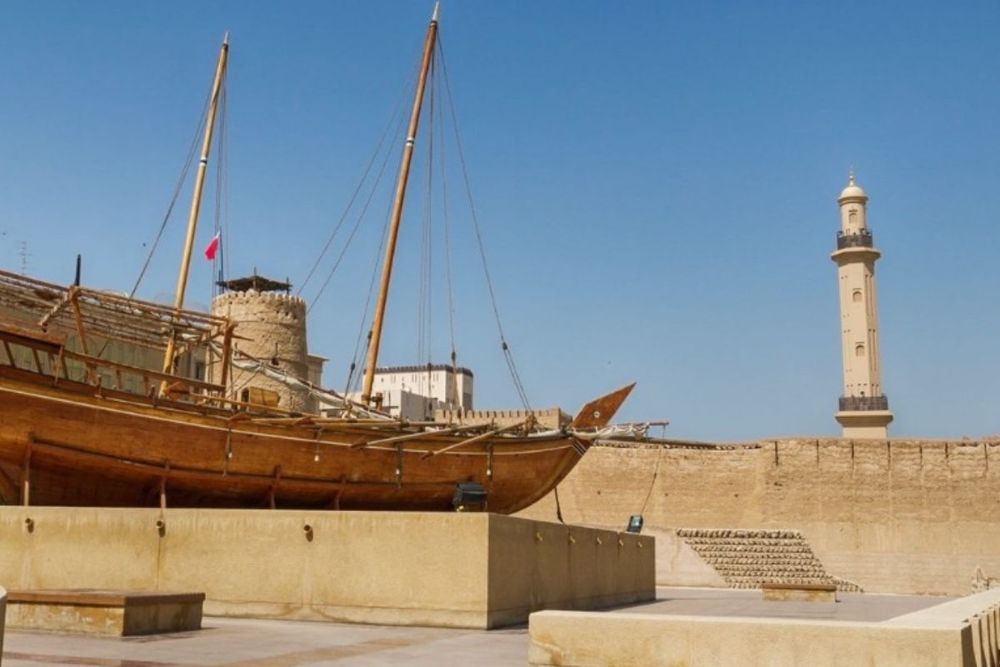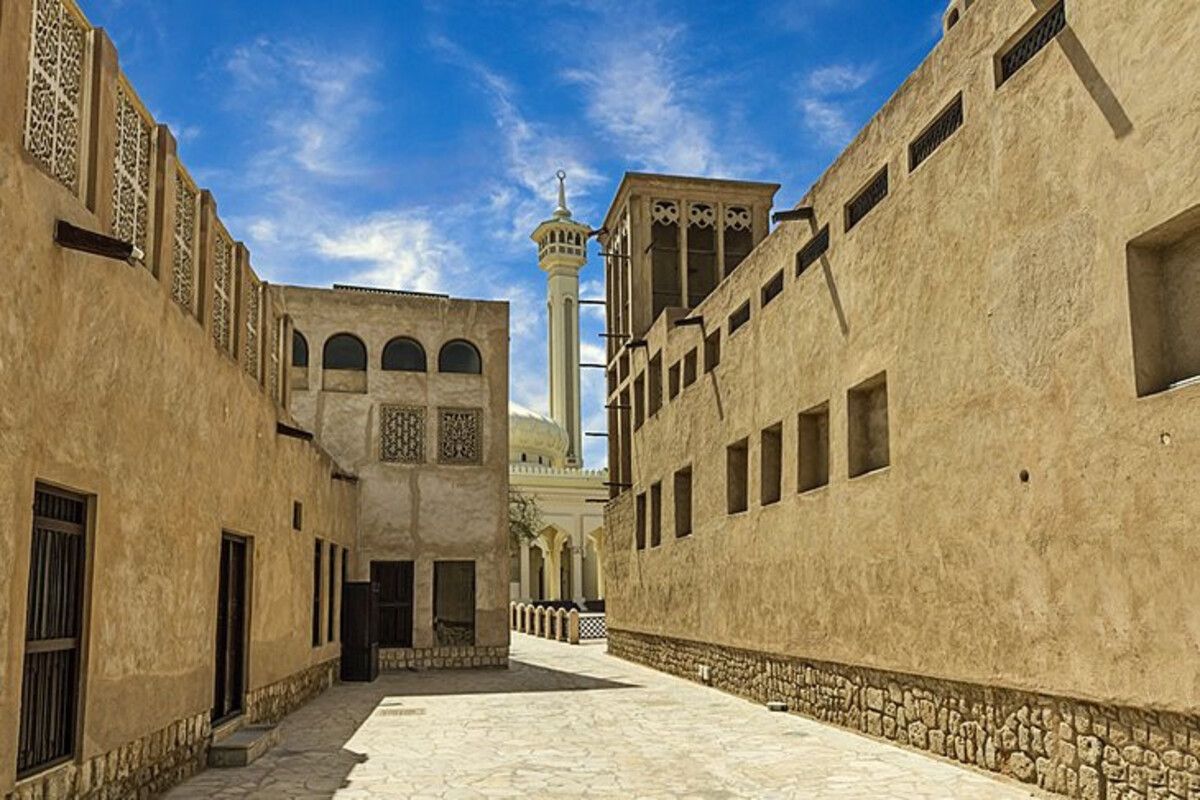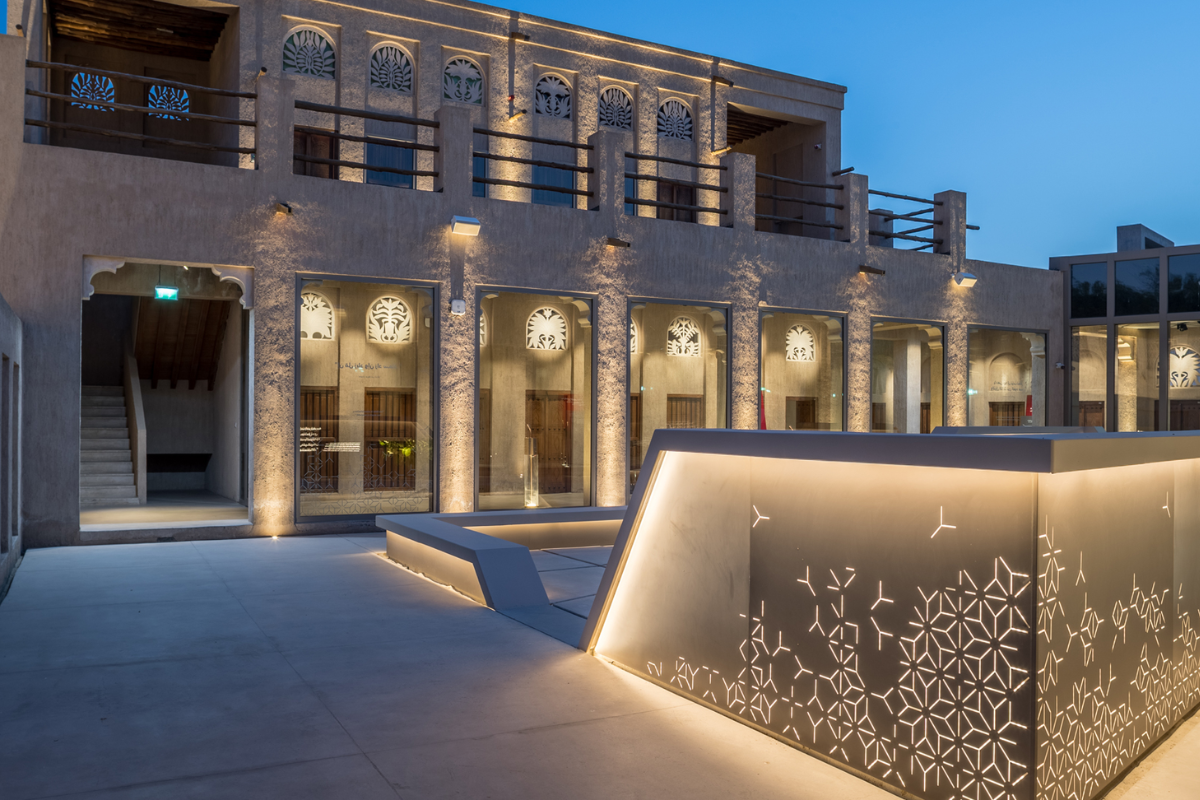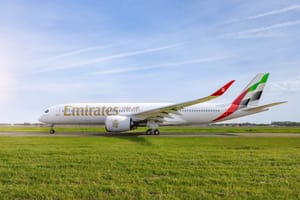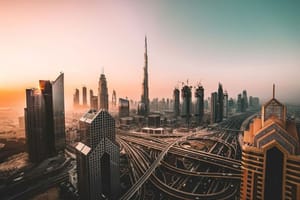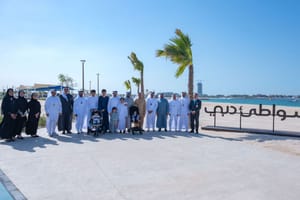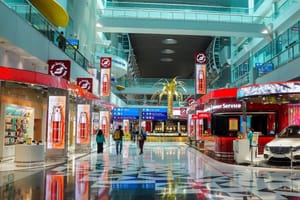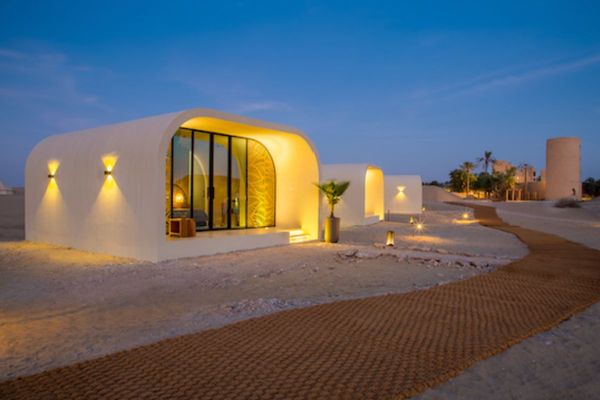Dubai is a city that is filled with culture and heritage. It is a fascinating cultural hub with several museums and art galleries. Museums are a fun learning experience for all whether you are a tourist or a long-time resident. You get to learn new things about the past and the future and enjoy an overall unique and fulfilling experience. Explore the history, heritage, and culture of Dubai at the largest heritage museum in Dubai, Al Shindagha Museum. Read more to find out all you need to know about this cultural gem in the city.
About Al Shindagha Museum
The Shindagha Museum is located at a very prominent spot in Dubai that has witnessed the city’s inceptions and development. You’ll be transported back in time to the 19th century and learn about the heritage and growth of UAE to the stunning metropolis it is today. You are sure to leave the museum with profound knowledge and insight into UAE’s rich past from pearl diving, oil era, cultural practices, and the significance of The Creek on trade. This museum features various sections with interactive displays with photos, videos, and artefacts. The Sheikh Saeed Al Maktoum House, which was the oldest building in Dubai and the official residence of Sheikh Saeed Al Maktoum, is now also a part of the Shindagha Museum.
The Shindagha Museum provides its visitors with a taste of Dubai and is well-known for its openness and progressive thinking. The museum focuses on Dubai's culture and traditions, allowing visitors to learn about the city's fascinating history. This museum's mission is to be a one-stop shop for people who are interested in Emirati culture and want to learn more about it. It was designed to be an educational and entertainment center of human interaction and understanding, one that will inspire this generation and those to come.
Pavilions and What to expect
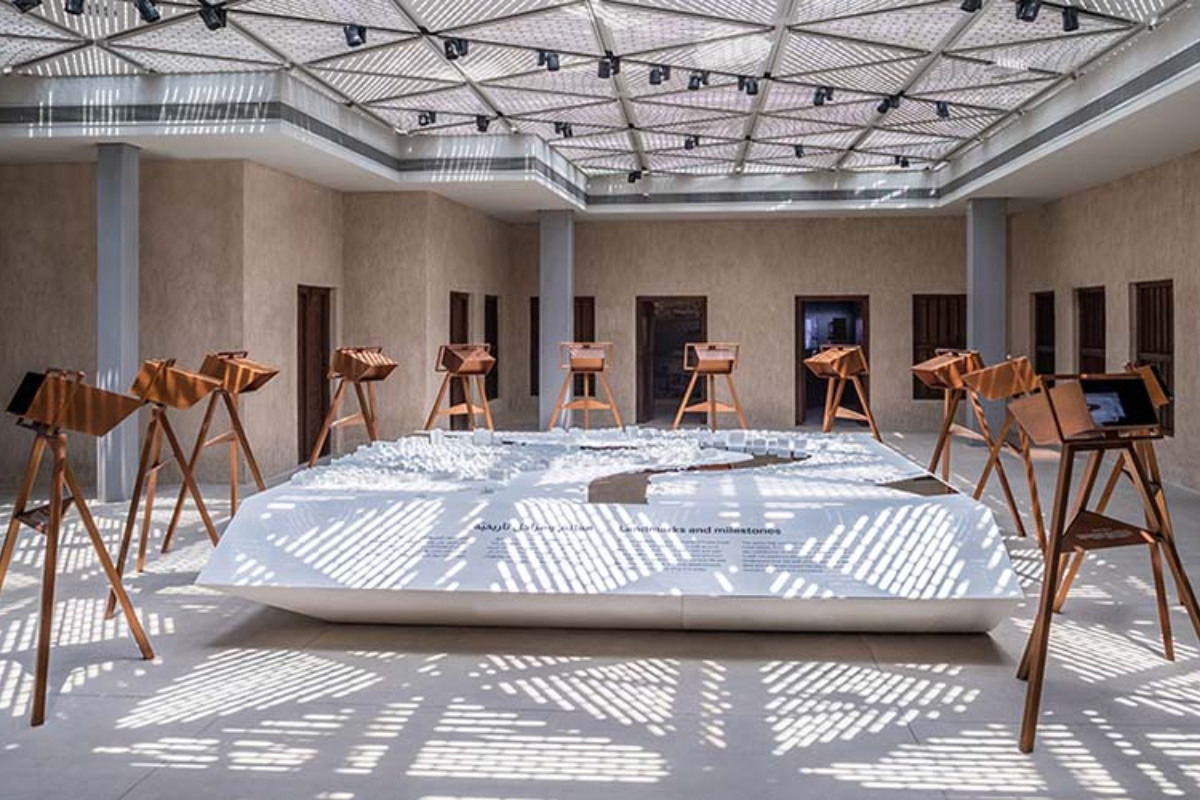
The museum offers a wide variety of experiences and attractions that explore the history and culture of the city throughout its houses or pavilions. They are categorized into Governance and Society, Creativity and Well-Being, Living off the Sea and Land and Children’s Pavilion.
Let’s take a brief look at what you can expect at each of these pavilions-
1. Visitor’s center: This is the perfect starting point before embarking on a journey of historical exploration. It is located at the museum's entrance, visitors will receive orientation and navigational information, as well as information about current or new events and programs. You can also find out about guided tours and theatre productions here. You can also buy tickets to the museum from the reception if you haven’t booked them online.
2. Governance and society:
In this pavilion, you will find four sections:
a) Al Maktoum Residence – This section documents the late Sheikh Rashid bin Saeed Al Maktoum's experience and role in the development of Dubai, as well as the legacy of Dubai's ruling family. The Sheikh Saeed Al Maktoum House, built in 1896, is now one of the museum's essential sections, packed with arts and artifacts that shed light on Dubai's past rulers as well as their incredible achievements. Apart from these, its humble yet expansive stature, enriched by wind towers, spacious courtyards, and rooms, is certain to take your breath away.
b) Dubai Creek - Birth of City – This section will provide visitors with glimpses of the renowned "khor," a local term for a creek or waterway. Story of the Creek provides a cutting-edge multimedia experience, including an informative and empowering film that immerses visitors in personal stories that bring the neighborhood to life. It is a singular sensory experience that tells the timeless story of the resilience of the human spirit and how Dubai's citizens were able to create a prosperous city by embracing their history and learning from the lessons of the past.
c) People of Faith – This section will assist visitors in understanding how Islam has enabled Emiratis to preserve their heritage and culture. It begins with an orientation that provides an understanding of Islam's fundamental principles, elements, and beliefs, as well as its influence on language, science, the arts, and architecture. You can then travel back in time to see how Emiratis in the 20th century lived in harmony with the principles of Islam, sharing beliefs and attitudes which they then built into the fabric of everyday life.
d) Emerging City – This section delves into specific aspects of the city's development, focusing on Dubai's famous megastructures as well as the enduring spirit of the Shindagha neighborhood.As you wander through the houses in this section, you can follow the fascinating evolution of the emirate’s-built environment and take in the development of its architecture and urban landscape.
3. Creativity and Wellbeing
Each section of this pavilion explores ancient Emirati clothing, crafts, traditional jewelry, perfumery, and medicine. The sections include:
a) Traditional Craft House - This section of the museum depicts the lives of skilled Emirati men and women, illustrating how their work was integral to daily life over the centuries, providing shelter, clothing, tools, cooking implements, and storage for food and medicine. Explore the use of natural products to make by hand what was needed to survive from day to day, and how this evolved into creating intricate clothes and goods for special occasions.
b) Beauty and Adornment – This section will immerse you in the distinctive methods, looks, and products that constitute Dubai's traditional beauty industry. For Emiratis, both men and women's hairstyles and clothing play a crucial role in defining their national identity. The kandura, the ghutra, the shaila, and the jalabiya are stunning examples of traditional clothing that have transformed from being merely functional clothing to gorgeous, expressive articles of outerwear. Here, the ancient tradition of henna application is also discussed.
c) Traditional Jewelry – This section delves deeper into the tradition and history of body adornment with elaborate, beautifully crafted pieces, as well as how trends and tastes have evolved over time. A selection of UAE-made precious metal, gemstone, and pearl ornaments are also on display. These pieces take on appealing forms that reflect the marine, desert, and mountainous landscapes of the UAE.
d) Perfume House – Explore the techniques that bring exotic Emirati fragrances to life while allowing all your senses to be stimulated and delighted. Perfume House takes visitors on a fragrant trip to discover some uncommon Ingredients while learning about historic customs using traditional methods for creating scented oils and fragrances that stretch back centuries. Learn about the significance of traditional scents in Emirati culture, their connections to the past, and how they are used in rituals and daily life.
e) Traditional Healthcare – This area of the museum displays not only medical procedures but also the health and hygiene practices of earlier Emirati generations. The section also examines the Al Maktoum Hospital, which was established in the 1950s, and the first pharmacy in Dubai, founded by Mohammed Habib Al Reda in the 1930s. Both institutions were pioneering medical hubs that set the course for the future.
4. Living off the Sea and land
Did you know that Dubai has a more than 7,000-year maritime history? This section of the museum examines how the sea has been essential to Dubai's development:
a) Culture of the Sea – Explore the early 20th century in this section, when Dubai flourished as the center of the pearl trade. Learn what it took to succeed in a marine-based economy in terms of abilities, tenacity, and creativity. The section looks at how families managed when men were gone on dhows for months or even years at a time, as well as how the sea's bounty influenced local cuisine. The main marine fauna, environments, and natural resources will be of particular interest to marine biology enthusiasts.
b) Life on Land – This is a thematic and immersive house for guests that opens with an amazing 4D theater introduction. Here, visitors to the museum have the opportunity to "see" through a falcon's eyes while soaring over deserts, mountains, and coastal regions thanks to the power of modern technology. Obtain a bird's-eye view of past Emirati society to learn more about their way of life. Additionally, this section gives readers the opportunity to learn more about Dubai's equally varied flora and fauna.
c) Traditional Food – This section of the museum explores how ingredients are gathered or caught from the mountains, oases, sea, and land, to create a delightful cuisine that is totally unique. Learn about the rituals, practices, cooking techniques, and aromatic spices and local produce that are part of traditional Dubai food and drink. This section includes highly interactive exhibits that are also, naturally, delicious treats for the senses. Since this area is all about enjoying life to the fullest, visitors can touch, taste, and smell their way through the exhibition.
5. Children’s Pavilion: Children can learn about Emirati heritage through an interactive playroom in this pavilion's "Children's House," a special section of the museum where they can also enjoy playing some traditional Emirati games while also learning about Emirati culture. This area of the museum is welcoming and interesting, and it promotes intergenerational storytelling, lifelong learning, improved observational skills, and a desire to try new things. Along with learning about the wonders of nature, the land, and the sea, kids will also enjoy playing some traditional Emirati games.
Location and how to reach
Al Shindagha Museum is located on the Bur Dubai side of the Dubai Creek.
Since the museum is located at a prominent spot in the city, it is very easy to locate to. To reach by metro you can take the Al Ghubaiba Metro Station on the Green line which is the nearest metro station. The Ghubaiba Metro Bus Station and the metro station is only a two-minute walk from the museum. You can also reach the museum by ferry, board the abra at the Al Ghubaiba Marine Transport Station which is aa walkable distance from the museum. You can also drive there by car or book a taxi to reach your destination.
Tickets and Timings
The entry tickets to the Museum are as follows:
Adults (24 years and above) – 50 AED
Students (5 to 24 years) – 20 AED
Groups (5 persons and above) – 40 AED
Children (under five years) – Free
Emirati Senior Citizens – Free
The Al Shindagha Museum is open every Wednesday to Monday from 10 am to 8 pm. It is closed on Tuesdays. The last entry to the Museum is at 7 pm. Ramadan Timings are 10:00 am to 05:00 pm. Last entry being 04:00 pm
Also Read:

